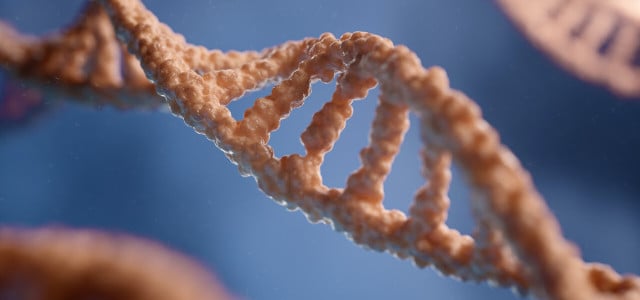
Until now, the complete sequence of the Y chromosome has remained hidden. Researchers have now succeeded in decoding the genetic code of the chromosome in its entirety.
For genome researchers, the complete sequencing of the Y chromosome – also known as the male sex chromosome – has long been considered a challenge. One reason for this was the highly complex structure of the chromosome with its many repeating sections. Large parts of its genetic code thus remained hidden.
Until now: Researchers from the Telomere-to-Telomere (T2T) Consortium, a team of more than 100 researchers led by Adam Phillippy from the National Human Genome Research Institute in the US state of Maryland, have now fully decoded the chromosome. The scientists presented their research results in two articles in the journal Nature.
“The biggest surprise was how ordered the repeats are,” explains study leader Adam Phillippy in a press release. Almost half of the Y chromosome consists of alternating blocks of two specific repeating sequences.
“If all the lines of the book are unique, it is easier to determine the order of the lines. However, when the same sentence is repeated thousands or millions of times, the original order of the stripes is far less clear.”
New sequencing technology enables highly complex analysis
In addition to the repeats and palindromes – sections of genes that result in the same sequence forwards and backwards – the team also identified 41 genes that contain the blueprint for proteins that control bodily functions.
In its entirety, the sequence of the Y chromosome comprises 62,460,029 base pairs. The researchers have now succeeded in fully decoding them thanks to recent advances in sequencing technology: they make it possible to analyze and read DNA sequences that are several tens of thousands to one million base pairs long. In the meantime, DNA that has a large number of repeating sequences can also be decoded in this way.
In a second article in the magazine Nature, the scientists published the results of a study that resembles a highly complex puzzle: Here, the researchers designed the Y chromosome of a total of 43 male individuals from 21 different human populations. Those assembled sequences manage to provide a detailed insight into the genetic development of Y chromosomes over a period of 183,000 years of human evolution.
Both works could, as the researchers explain in the magazine Nature, provide a more concrete picture of the role of the chromosome in male development, fertility and genetic diseases. They reveal new DNA sequences, signatures of conserved regions and provide insights into the molecular mechanisms that contributed to the complex structure of the Y chromosome.
“Now that we have the 100% complete sequence of the Y chromosome, we can identify numerous genetic variations,” Dylan Taylor of Johns Hopkins University, a co-author of the study, told Nature.
Further discovery following investigation
Following the research results, the researchers made another surprising discovery: in a database of bacterial genomes, they discovered that more than 5,100 of the bacterial genomes in the database matched short stretches of the human Y chromosome.
From this they concluded: The bacterial genomes must have been faulty because they were contaminated with human DNA. This had not previously been noticed because the sequences of the Y chromosome were not completely known in their entirety.
The Y chromosome is the smallest and poorest human chromosome. It is believed that its original structure was very similar to that of the X chromosome – but lost almost 90 percent of its genetic material over time. Men would not be able to survive with the presence of a Y chromosome alone, they always need an X chromosome for this.
Source used: Nature (“The complete sequence of a human Y chromosome”, “Assembly of 43 human Y chromosomes reveals extensive complexity and variation”) press release
Read more here on Techzle\.com:
- Extra chromosome in men twice as often as thought: the health risks
- “Are not victims of our genes”: why one’s own personality can be changed
- Genome Editing: Undetectable Genetic Engineering?